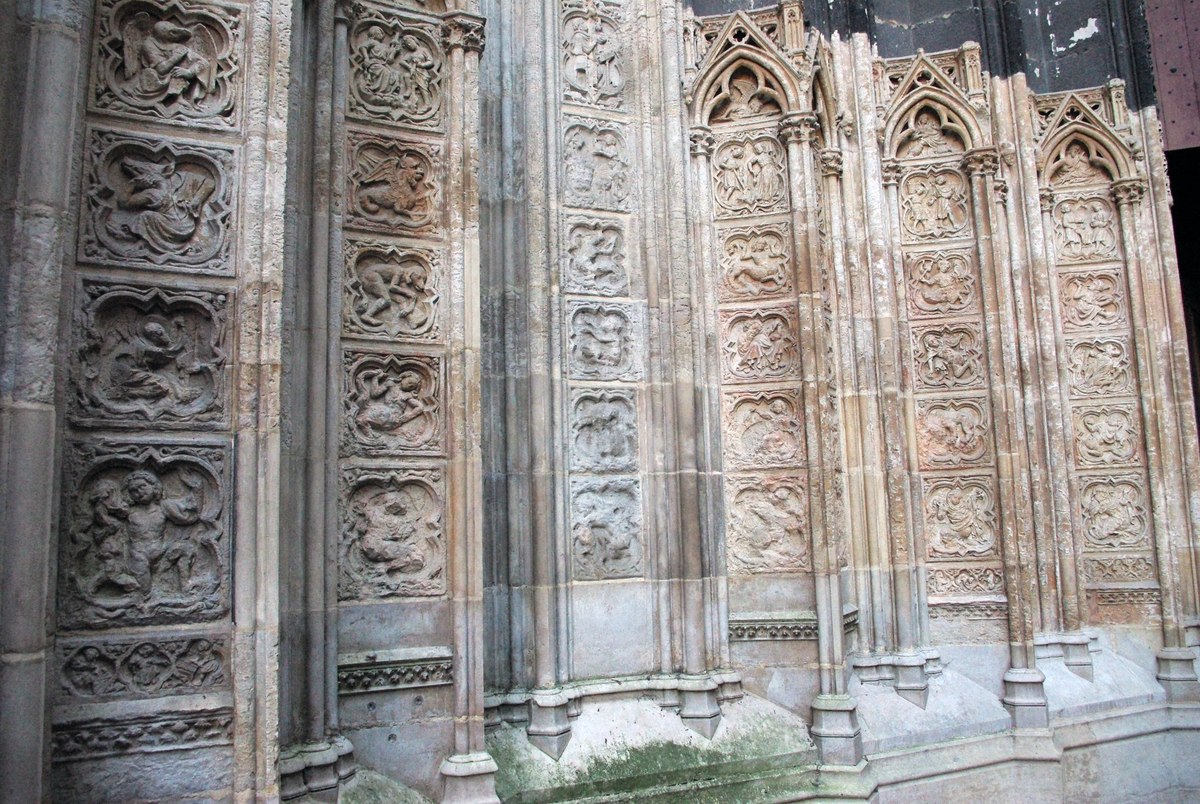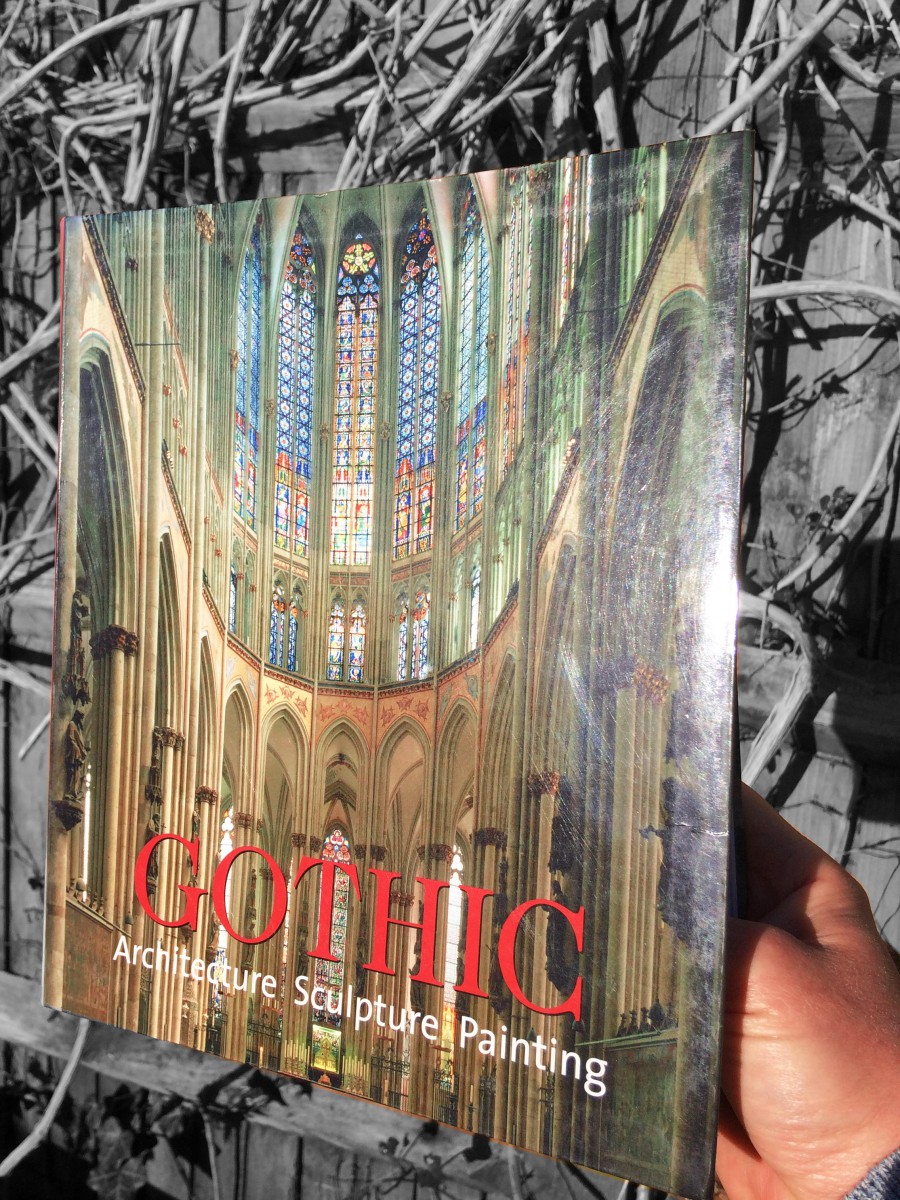The Librarians Portal (Portail des Libraires) is situated in the North end of the transept of Rouen Cathedral. Once the private access for the canon priests to the cathedral, the portal is a beautiful example of Gothic architecture in Normandy.
Portail des Libraires in Rouen Cathedral

The North end of the transept bears a near resemblance to the Calende Portal (South Transept).
Its name refers to the transcribers and calligraphists whose shops once occupied the courtyard.
This was the private access for the canon priests who had to cross the courtyard to reach the rue Saint-Romain through a fortified gate. The gateway consists of two lofty pointed arches of equal height, crowned by a row of smaller arcades.

Construction of the Librarians Portal (Portail des Libraires) started in 1278.
On both sides of the portal are quatrefoils comprising of 200 medallions in well preserved featuring an endless variety of grotesques, fanciful monsters, animals, mermaids, tritons, harpies, woodmen, satyrs…

The statues which stood on each side of the portals have been destroyed and only their pedestals remain.
The tympanum reveals the Last Judgement on the two first register. The third register was supposed to receive a Christ in glory but was unfortunately never built.

The trumeau holds a statue of Saint-Romain knocking down the infamous dragon of Rouen (la Gargouille).

The pediment above the portal is crocketed and filled with tracery
Above the portal is a magnificent rose window.

The gable of the transept is crocketed and holds a finial.
The Librarians Portal is flanked by two square towers similar to those of the South Transept.
The two buttresses flanking the portal are richly ornamented and terminate in pinnacles.
My book recommendation!
Its name? Simply:
Gothic: Architecture, Sculpture, Painting by Rolf Toman, Publisher: Ullmann

This book has been for me a great resource that helped me better understand the Gothic movement in art from the 12th century to the Renaissance. An architectural style that first originated from France and spread all over Europe.
Over 500 pages it focuses on the development of Gothic architecture with many illustrations and photographs, but not only. I’ve also found interesting the in-depth discussion of the most diverse art forms, including painting, sculpture, metalwork and even book illumination! It also includes specific coverage of the Cathars’ Heresy and the Papal Palace in Avignon. And, of course, it mentions the cathedral of Notre-Dame de Rouen!
This is definitely the book I recommend if – like me – you love everything about Gothic such as churches, gargoyles, stained glass, flying buttresses and so much more.
Find out more about Rouen Cathedral.
For more information, visit the Rouen Tourist Board website.



